

Wartime Heritage
ASSOCIATION
The Merchant Freighter "Empire Industry"
The Wartime Connection of Mae O’Brien and YMCA Red Triangle Club
It was late September, 1940, when Karl Baker of Yarmouth, Nova
Scotia, asked Mary (Mae) Brown O’Brien if she would be hostess of the
new war canteen to be opened at the local YMCA. “I told him I had
absolutely no experience but would be glad to help out in any way.”
It was October 18th,
1940 when the “Red Triangle
Club” officially opened. Mae
Brown-O’Brien was appointed
the “official Hostess”.
The room itself,
formerly a theatre, had been
rebuilt. When finished, the
walls were painted ivory with
woodwork of mahogany stain.
The balcony was converted
into a writing room which
proved to be the most
popular spot of all.
“The first month the work was hard for all of us, because nobody had any previous experience or training, especially when five
hundred Army trainees landed in town. In twenty four hours there were nearly five hundred of the Air Force as well”.
The Red Triangle Room would become a center of activity for soldiers, sailors, and airmen as they passed through Yarmouth
during World War II.
Early in December 1940, a freighter, the Empire Industry arrived
in Yarmouth and Mae Brown-O’Brien, Hostess at the YMCA war canteen,
was asked to be especially nice to any of the crew who happened to
come to the Red Triangle Room. Most would not be in uniform. They
were part of the Merchant Marine.
“That day three of the men came in to see us. They sailed from
Hull, England and had such a dangerous, exciting crossing that they
held all of the canteen ladies speechless with their stories and accent.
They were in port ten days and fairly lived at the R.T.C. [Red Triangle
Canteen]. The second day, one of the boys, Mr. Jones, 1st radio officer,
said to me,’ I would like to have a tune.’ I was looking around for
someone to play the piano for him, when I noticed he was sitting at the
piano and started to play. I was never more amazed when he began to
play so beautifully that everyone stopped to listen. From then on,
whenever he came in, a shout sent up for him to play. The girls and
women became so attached to these boys and men that the Sunday
night committee packed Christmas boxes for thirty-five of them. We
collected hundreds of magazines”.
The day before they sailed Mae O’Brien was asked to pay a visit
to the ship for afternoon tea. She took with her a game of Chinese
checkers as a gift for the ships company. The following morning the
freighter left Yarmouth for Halifax where it waited for a convoy to
cross the Atlantic.
Mae O’Brien would receive four letters from ‘the boys’ while
they waited in Halifax and a promise of letters the moment they
reached the other side.
The crossing would normally take twenty-one days but months
passed without a word from the crew of the Empire Industry.
On June 20th, some six months after the Empire Industry sailed from Halifax, Mae O’Brien received a post card from Lawrence
Sinclair, First Officer of the ship.
“Dear Mrs. O’Brien: You will see from the address overleaf where the crew of the vessel who visited your club about the middle
of December last, are now domiciled. I thought I would let you know and also thank you for all the kindness shown us while in your
port, especially for the Christmas and New Year parcels we received, which we often think of now with longing. I am yours truly.”
The note was written May 4th, 1941 from a German prisoner of war camp. The Empire Industry had been torpedoed on the
crossing to Glasgow.
A second card was to arrive from George Leitch asking for a game of Chinese checkers. Mae O’Brien would send a parcel
including the requested game to these British prisoners of war.
It was in January 1941 that the two Germans battleships, Scharnhorst and
Gneisenau began an Atlantic anti-convoy operation codenamed "Berlin”. The operation, in
part, concentrated on the route between Canada and Britain in early February and March.
On March 18th the Scharnhorst and Gneisenau were to end their operations against the
Halifax convoys and were to make for Brest to prepare of new operations. That voyage
took the toward the FIX convoy route between Halifax and England.
On March 16th the silhouettes of merchant vessels were sighted against the night
sky. At dawn, it became evident that the Scharnhorst and Gneisenau were steaming into
the middle of the convoy. In the early morning hours the Gneisenau sank the British
passenger-cargo ship Rio Dorado and at 8.55 am the British cargo ship Empire Industry.
Three others merchant ships were also sunk by the Gneisenau on that date.
The cargo ship, Empire Industry, a British ship in 1941, had been a German ship
seized by the British on November 17th 1939.

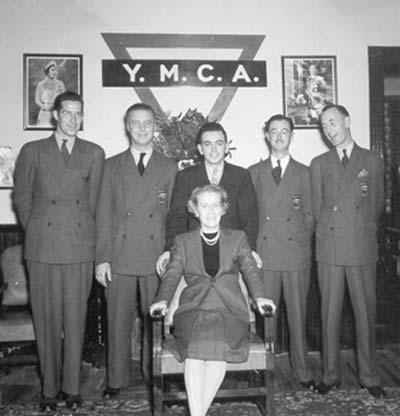
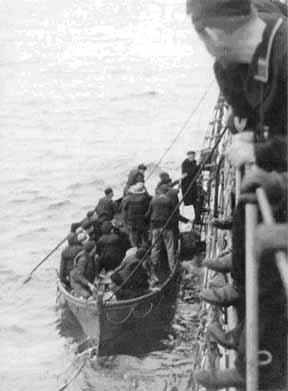

copyright © Wartime Heritage Association
Website hosting courtesy of Register.com - a web.com company
Captured Crews from Merchant Ships

The Merchant Freighter "Empire Industry"
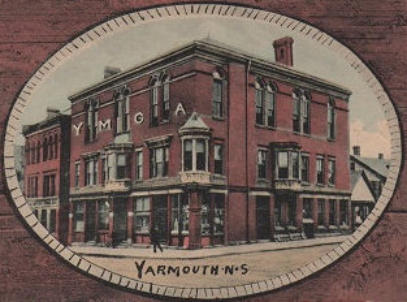
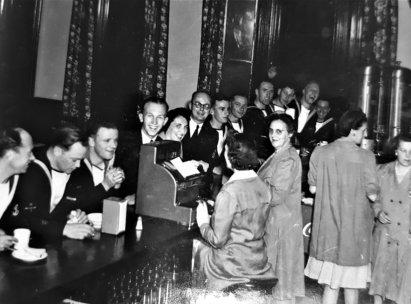
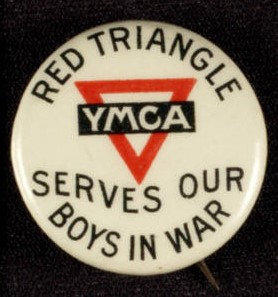
Mae Brown O'Brien and
'friends' September
1944


- World War I - Menu
- WWI Stories and Articles
- Photos - Yarmouth Soldiers
- Selection of World War I Songs
- WWI Casualties of Yarmouth, NS
- Those Who Served - Yarmouth, NS
- WWI Casualties Digby Co. NS
- WWI Casualties Shelburne Co. NS
- Merchant Mariners (1915) Yarmouth, NS
- Canadian Forestry Corps - Non Yarmouth Birth/Residence Enlistments
- US Draft Registry - Yarmouth NS Born


- World War II - Menu
- WWII Stories and Articles
- Telegraphist Air Gunners
- WWII Casualties of Nova Scotia
- US Casualties with NS Connection
- Far East/Pacific Casualties with NS Connection
- Merchant Navy Casualties Nova Scotia
- Nova Scotia WWII Casualties Holten Canadian War Cemetery
- D-Day Casualties - Nova Scotia
- CANLOAN Program Casualties - Nova Scotia
- Battle of the Bulge Casualties - Nova Scotia
- WWII Casualties Yarmouth NS
- Yarmouth Casualties - RCAF RAF Canadian Army WWII
- Yarmouth Co., Marrages WWII
- Casualties Non-Born/Residents with Connection to Yarmouth Co., Nova Scotia.
- WWII Casualties Digby Co., NS
- Non-Nova Scotian WWII Casualties Buried in Nova Scotia
- WWII RCAF Casualties Aged 16-18
- Brothers/Sisters Who Served - World War II













